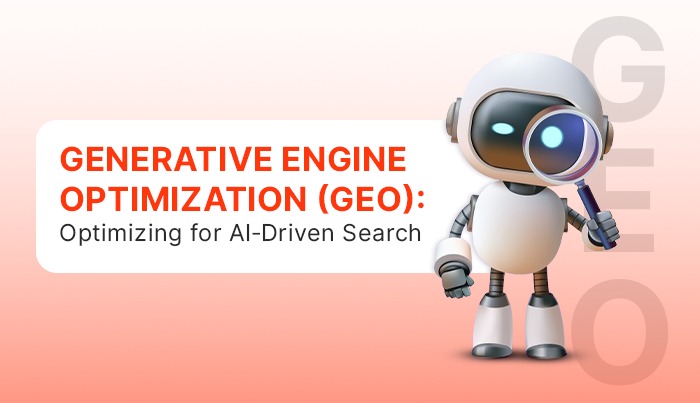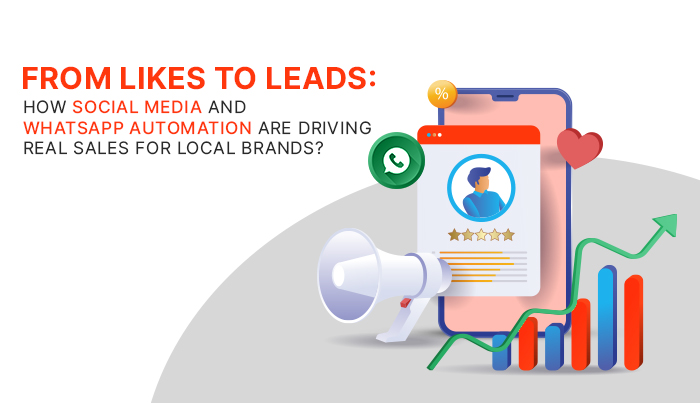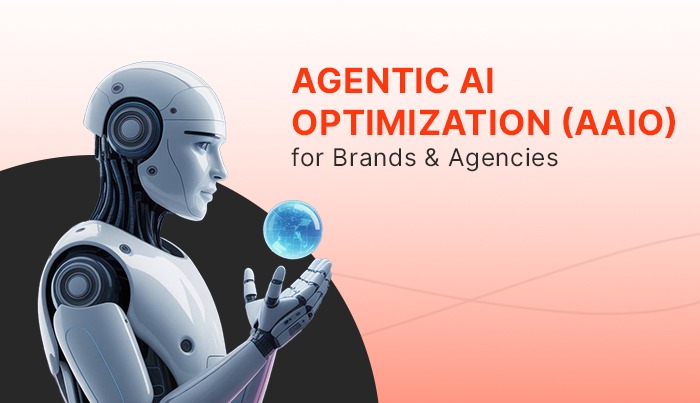Generative Engine Optimization (GEO): Optimizing for AI‑Driven Search
The way people find information is shifting fast. For years, we’ve written to impress Google’s crawlers and win the click. But what happens when the click disappears? Generative Engine Optimisation, or GEO, is about preparing for that reality where AI systems like ChatGPT decide what gets surfaced, cited, and trusted.
This is the new challenge for marketers who want visibility not just on Google but inside AI-driven search engines such as ChatGPT, Gemini, Perplexity, and other large language model systems that summarise the web before users even click.
Below is a practical guide that explains what GEO means, how it differs from SEO, and how to prepare for an AI-first content optimisation world in 2025.
What Generative Engine Optimisation Actually Is
Generative Engine Optimisation or GEO is the practice of shaping your content so that generative AI systems such as ChatGPT or Claude select, cite, or summarise your brand when responding to queries.
Rather than chasing rankings, GEO focuses on being the source that AI trusts. As generative search is slowly becoming the need of the hour, the competition is no longer between
As generative search becomes mainstream, the competition is no longer about who ranks first on Google but whose words are repeated by machines.
How GEO Differs from Traditional SEO
While SEO and GEO share the same ultimate goal of visibility, they differ in focus and measurement.
SEO is all about how many clicks your website gets, whereas GEO is about where and when your business comes up in the answers of AI search engines.
Another difference lies in how content is structured. SEO rewards keyword alignment and technical precision, while GEO rewards contextual authority, trustworthiness, and clarity of expression.
Optimising for AI search engines means designing content that AI models can understand, summarise, and attribute confidently.
Why Marketers Must Care About GEO
The arrival of AI-driven search optimisation is transforming how audiences discover brands. When people ask ChatGPT or Perplexity for recommendations, these platforms rarely show a list of ten results. They give one composite answer, and that answer carries trust.
That is why SEO for ChatGPT and other similar platforms is now a strategic necessity. Businesses that adapt early will define how their industry is represented in AI-generated answers, while those who wait will find themselves quietly disappearing from view.
The Principles of AI First Content Optimisation
To understand SEO for LLMs, think beyond keywords or backlinks. Generative models are trained to recognise contextual authority. Every piece of content should communicate expertise, clarity, and authenticity.
Here are the key principles of AI-first content optimisation in 2025.
1. Make Your Content Citable
If you want AI systems to treat your content as credible, give them something worth trusting. Publish real observations, industry data, or commentary that comes from experience rather than aggregation. When your content carries a clear point of view and evidence behind it, generative AI is far more likely to reference it over surface-level material.
2. Use Structured Data and Metadata Properly
Add schema markup for authors, organisations, and publication dates. Optimising websites for generative AI engines means giving machines structured context to understand who wrote what and why it matters.
3. Build for EEAT (Experience, Expertise, Authoritativeness, Trustworthiness)
Large language models are designed to prioritise content that demonstrates credibility. Make sure every piece reflects genuine authorship and verifiable knowledge. That is how you rank in AI answers by being the credible voice, not just a visible one.
4. Write Excerpt Ready Passages
AI models often quote concise, valuable statements. Summarise sections with definitions, numbered insights, or short takeaways. This approach helps models lift and attribute your content accurately during chat-based search optimisation.
5. Prioritise Digital PR and Authoritative Mentions
Earned citations and mentions from respected publications make your content more trustworthy to AI systems. This natural authority strengthens both SEO and GEO together.
GEO Versus SEO: The Real Difference
A common question among marketers today is the difference between SEO and GEO.
SEO is about ranking for people on a results page.
GEO is about ranking within machines, where there is only one summarised answer.
So, while SEO's main arena remains Google, GEO's arena includes ChatGPT, Gemini, Copilot, and every AI-driven search interface that interprets and rephrases web information.
Preparing for the Future of SEO in 2025
The future of SEO 2025 will not depend on link exchanges or keyword stuffing. It will rely on creating content that is semantically rich, verifiable, and valuable enough for AI-driven search optimisation systems to cite.
Here is how businesses can prepare for generative search.
- Audit your most visited pages and identify those that already answer user questions directly.
- Rewrite important sections to include short, clearly stated definitions that AI can quote.
- Ensure that every factual claim is sourced or attributed.
- Monitor AI platforms such as ChatGPT and Perplexity to check if your brand appears in their citations.
This approach is not about rewriting everything but about optimising for AI search engines through structure, evidence, and clarity.
Will AI Replace Google Search SEO
No, but it will transform it.
AI-driven search engines like ChatGPT are not replacing Google; they are reshaping how people interact with search itself. Even Google is now embedding generative AI into Search through AI Overviews. The implication is clear. Even traditional SEO now has a GEO layer.
Businesses that approach this shift as an opportunity rather than a threat will benefit twice, once in classic search and again in AI-generated discovery.
Even Google is now embedding generative AI into Search through AI overviews.
How Businesses Can Prepare for Generative Search
To future-proof your brand in this era of AI-driven search optimization, focus on these steps.
- Invest in research-led content. Create original material that AI systems can confidently cite.
- Train teams in semantic SEO. Help writers understand AI-first content optimisation principles.
- Build transparency and authorship clarity. Show who wrote the content and when. These are the details AI bots use to verify trust.
- Measure AI visibility. Emerging tools now track "AI citations" and "AI referral traffic". Adopt them early.
Preparing for generative search is not purely technical; it is strategic. It is about moving from chasing clicks to earning citations.
Also read: Should you use AI to write your content?
Conclusion: GEO Is the Next Chapter of SEO
GEO or Generative engine optimisation will not replace SEO, but it will reinforce it, and to win at both you need to invest in quality content and not quantity.
As AI-driven search engines reshape how information is found and summarised, the brands that succeed will be those that write for both humans and machines.
The opportunity lies in being part of the answer rather than part of the index.
GEO is the most important evolution since mobile-first indexing. It changes the competition from visibility to trust.
For marketers, it is important to understand and refine their content approach so their content is relevant for both AI answer engines as well as search engines.





